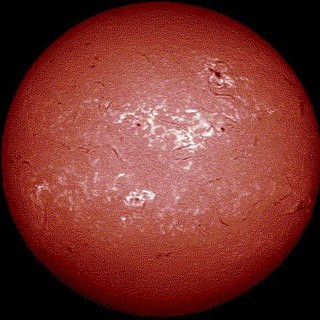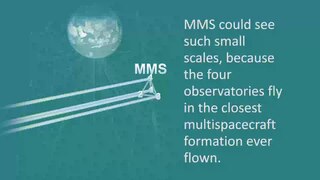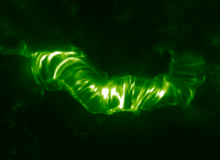
A corona is the outermost layer of a star's atmosphere. It consists of plasma.

A magnetic sail is a proposed method of spacecraft propulsion that uses a static magnetic field to deflect a plasma wind of charged particles radiated by the Sun or a Star thereby transferring momentum to accelerate or decelerate a spacecraft. Most approaches require little to no propellant and thus are a form of Field propulsion. A magnetic sail could also thrust against a planetary ionosphere or magnetosphere. Important use cases are: a modest force from the solar wind sustainable for a long period of time; deceleration in the interstellar medium and the plasma wind of a destination Star following interstellar travel at relativistic speeds achieved by some other means; and efficient deceleration in a planetary ionosphere. Plasma characteristics for the Solar wind, a planetary ionosphere and the interstellar medium and the specifics of the magnetic sail design determine achievable performance; such as, thrust, required power and mass.

The stability of a plasma is an important consideration in the study of plasma physics. When a system containing a plasma is at equilibrium, it is possible for certain parts of the plasma to be disturbed by small perturbative forces acting on it. The stability of the system determines if the perturbations will grow, oscillate, or be damped out.

Magnetohydrodynamics is a model of electrically conducting fluids that treats all interpenetrating particle species together as a single continuous medium. It is primarily concerned with the low-frequency, large-scale, magnetic behavior in plasmas and liquid metals and has applications in numerous fields including geophysics, astrophysics, and engineering.

A chromosphere is the second layer of a star's atmosphere, located above the photosphere and below the solar transition region and corona. The term usually refers to the Sun's chromosphere, but not exclusively.

A coronal mass ejection (CME) is a significant ejection of magnetic field and accompanying plasma mass from the Sun's corona into the heliosphere. CMEs are often associated with solar flares and other forms of solar activity, but a broadly accepted theoretical understanding of these relationships has not been established.
Helioseismology, a term coined by Douglas Gough, is the study of the structure and dynamics of the Sun through its oscillations. These are principally caused by sound waves that are continuously driven and damped by convection near the Sun's surface. It is similar to geoseismology, or asteroseismology, which are respectively the studies of the Earth or stars through their oscillations. While the Sun's oscillations were first detected in the early 1960s, it was only in the mid-1970s that it was realized that the oscillations propagated throughout the Sun and could allow scientists to study the Sun's deep interior. The modern field is separated into global helioseismology, which studies the Sun's resonant modes directly, and local helioseismology, which studies the propagation of the component waves near the Sun's surface.

In plasma physics, an Alfvén wave, named after Hannes Alfvén, is a type of plasma wave in which ions oscillate in response to a restoring force provided by an effective tension on the magnetic field lines.

Magnetic reconnection is a physical process occurring in highly conducting plasmas in which the magnetic topology is rearranged and magnetic energy is converted to kinetic energy, thermal energy, and particle acceleration. Magnetic reconnection occurs on timescales intermediate between slow resistive diffusion of the magnetic field and fast Alfvénic timescales.

A prominence, sometimes referred to as a filament, is a large plasma and magnetic field structure extending outward from the Sun's surface, often in a loop shape. Prominences are anchored to the Sun's surface in the photosphere, and extend outwards into the solar corona. While the corona consists of extremely hot plasma, prominences contain much cooler plasma, similar in composition to that of the chromosphere.
A magnetosonic wave, also called a magnetoacoustic wave, is a linear magnetohydrodynamic (MHD) wave that is driven by thermal pressure, magnetic pressure, and magnetic tension. There are two types of magnetosonic waves, the fast magnetosonic wave and the slow magnetosonic wave. Both fast and slow magnetosonic waves are present in the solar corona providing an observational foundation for the technique for coronal plasma diagnostics, coronal seismology.

A flux tube is a generally tube-like (cylindrical) region of space containing a magnetic field, B, such that the cylindrical sides of the tube are everywhere parallel to the magnetic field lines. It is a graphical visual aid for visualizing a magnetic field. Since no magnetic flux passes through the sides of the tube, the flux through any cross section of the tube is equal, and the flux entering the tube at one end is equal to the flux leaving the tube at the other. Both the cross-sectional area of the tube and the magnetic field strength may vary along the length of the tube, but the magnetic flux inside is always constant.

The interplanetary magnetic field (IMF), now more commonly referred to as the heliospheric magnetic field (HMF), is the component of the solar magnetic field that is dragged out from the solar corona by the solar wind flow to fill the Solar System.
In magnetohydrodynamics (MHD), shocks and discontinuities are transition layers where properties of a plasma change from one equilibrium state to another. The relation between the plasma properties on both sides of a shock or a discontinuity can be obtained from the conservative form of the MHD equations, assuming conservation of mass, momentum, energy and of .

In solar physics, a coronal loop is a well-defined arch-like structure in the Sun's atmosphere made up of relatively dense plasma confined and isolated from the surrounding medium by magnetic flux tubes. Coronal loops begin and end at two footpoints on the photosphere and project into the transition region and lower corona. They typically form and dissipate over periods of seconds to days and may span anywhere from 1 to 1,000 megametres in length.

Helmet streamers, also known as coronal streamers, are elongated cusp-like structures in the Sun's corona which are often visible in white-light coronagraphs and during solar eclipses. They are closed magnetic loops which lie above divisions between regions of opposite magnetic polarity on the Sun's surface. The solar wind elongates these loops to pointed tips which can extend a solar radius or more into the corona.

A nanoflare is a very small episodic heating event which happens in the corona, the external atmosphere of the Sun.

Supra-arcade downflows (SADs) are sunward-traveling plasma voids that are sometimes observed in the Sun's outer atmosphere, or corona, during solar flares. In solar physics, arcade refers to a bundle of coronal loops, and the prefix supra indicates that the downflows appear above flare arcades. They were first described in 1999 using the Soft X-ray Telescope (SXT) on board the Yohkoh satellite. SADs are byproducts of the magnetic reconnection process that drives solar flares, but their precise cause remains unknown.
Solar radio emission refers to radio waves that are naturally produced by the Sun, primarily from the lower and upper layers of the atmosphere called the chromosphere and corona, respectively. The Sun produces radio emissions through four known mechanisms, each of which operates primarily by converting the energy of moving electrons into electromagnetic radiation. The four emission mechanisms are thermal bremsstrahlung (braking) emission, gyromagnetic emission, plasma emission, and electron-cyclotron maser emission. The first two are incoherent mechanisms, which means that they are the summation of radiation generated independently by many individual particles. These mechanisms are primarily responsible for the persistent "background" emissions that slowly vary as structures in the atmosphere evolve. The latter two processes are coherent mechanisms, which refers to special cases where radiation is efficiently produced at a particular set of frequencies. Coherent mechanisms can produce much larger brightness temperatures (intensities) and are primarily responsible for the intense spikes of radiation called solar radio bursts, which are byproducts of the same processes that lead to other forms of solar activity like solar flares and coronal mass ejections.

Magnetic switchbacks are sudden reversals in the magnetic field of the solar wind. They can also be described as traveling disturbances in the solar wind that caused the magnetic field to bend back on itself. They were first observed by the NASA-ESA mission Ulysses, the first spacecraft to fly over the Sun's poles. NASA's Parker Solar Probe and NASA/ESA Solar Orbiter both observed switchbacks.























